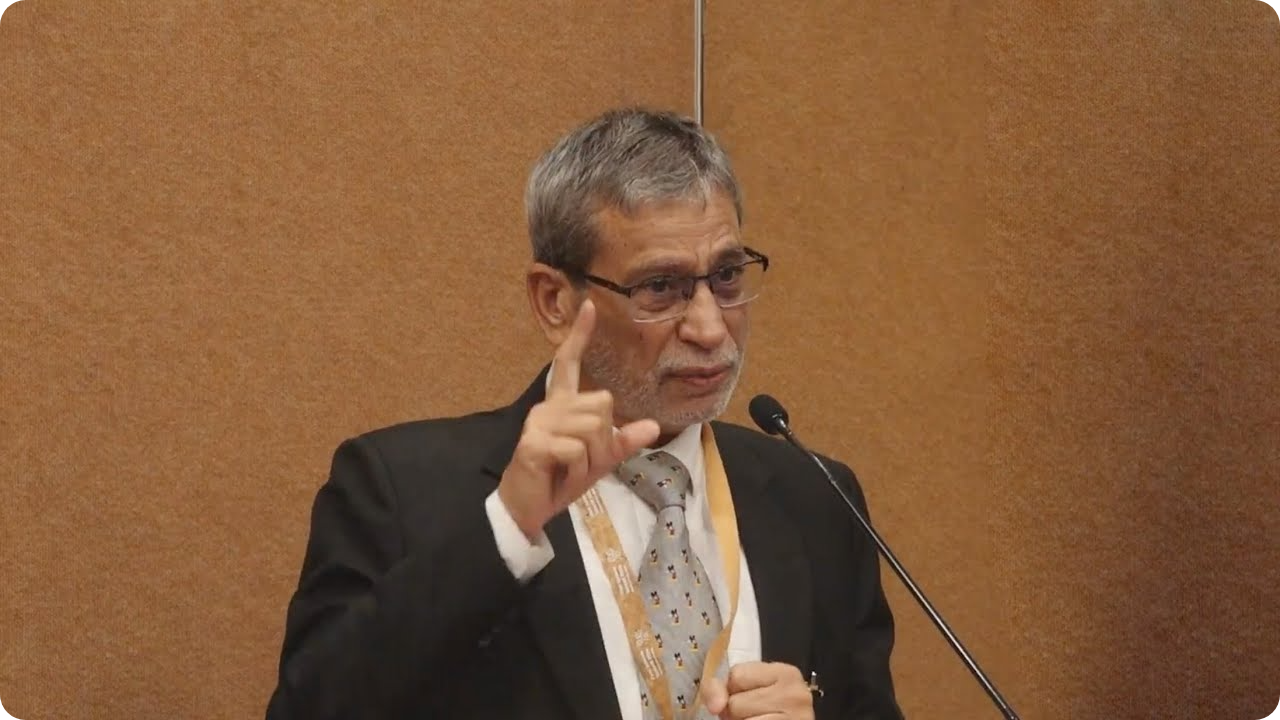Investment potential for nature-based solutions in India: Stakeholders perspectives
While it is an established fact that transitions in the Indian agriculture remain key to achieving the country’s emission reduction targets, it is also a well-analysed fact that finance remains the key driver for doing so. Approaches towards manging agricultural land to reduce sectoral emissions include nature-based solutions which require large volumes of investment for scaling up. Even with the various existing arrangements for facilitating agricultural financing at both national and state levels, the overall influx of money is far from adequate. Given the intricacies of the Indian agriculture sector, moving forward means that a situational stakeholder analysis is essential.
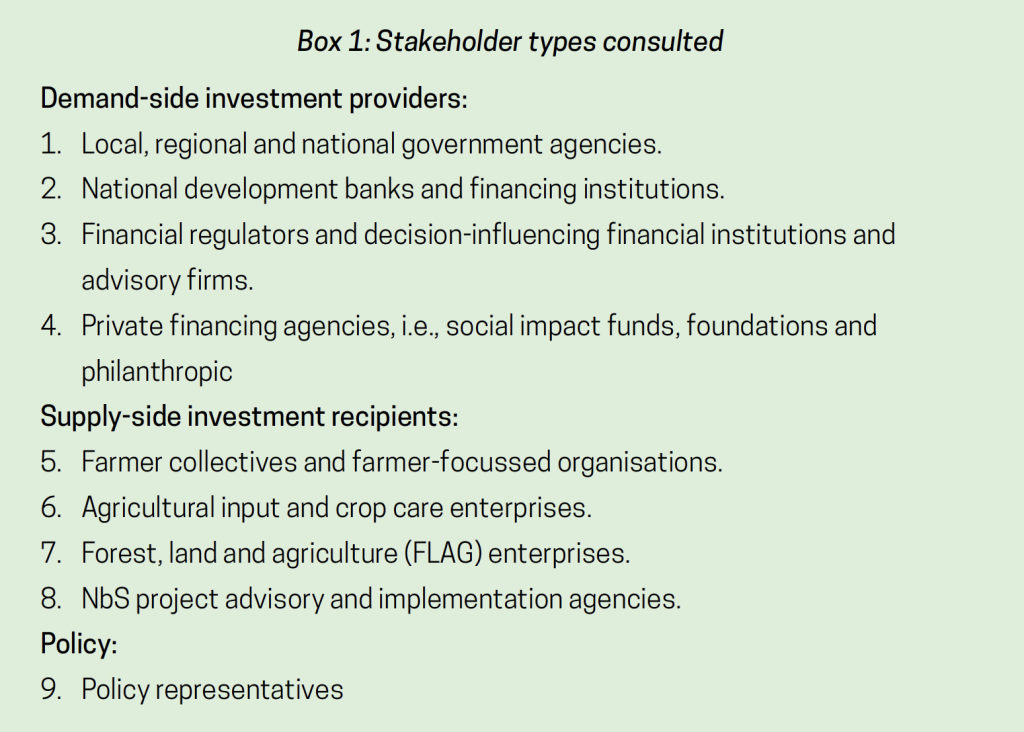
In this context, the report ‘Scoping Investment Potential for Nature-based Solutions in the Indian Agriculture Sector’ produced by FOLU and ATREE is an analysis of the current status of sectoral investments, emerging trends, and barriers. It also attempts to present potential public and private sources of finance that may increase investments into adopting NbS for climate and economic benefits at scale in India. This stakeholders’ perspective analysis emerges out of the broader work of FOLU India, known as the ‘Nature-based Solutions for Climate Mitigation and Adaptation’ (NCMA) initiative. Here is a summary of highlights from the report that is based on conversations with stakeholders from demand-side investment providers, supply-side investment recipients as well as policy intermediaries in India. Below is a list of the category of stakeholders consulted towards the preparation of this report.
On the topic of current perspectives and challenges in scaling investments into NbS in India, all stakeholders agreed that as climate change increasingly causes economic and ecological disruptions to the agricultural sector, transitioning to NbS appears as a rational choice bolstered by a solid business case. However, they also felt that government policies for agriculture are too fluid to consider a long-term transition to adoption practices. This is further compounded by the lack of clear and strong guidelines to support NbS investments by private sector.
A snapshot of the key remarks made mentioned by stakeholder types on current challenges and future prospects for investments is presented below.
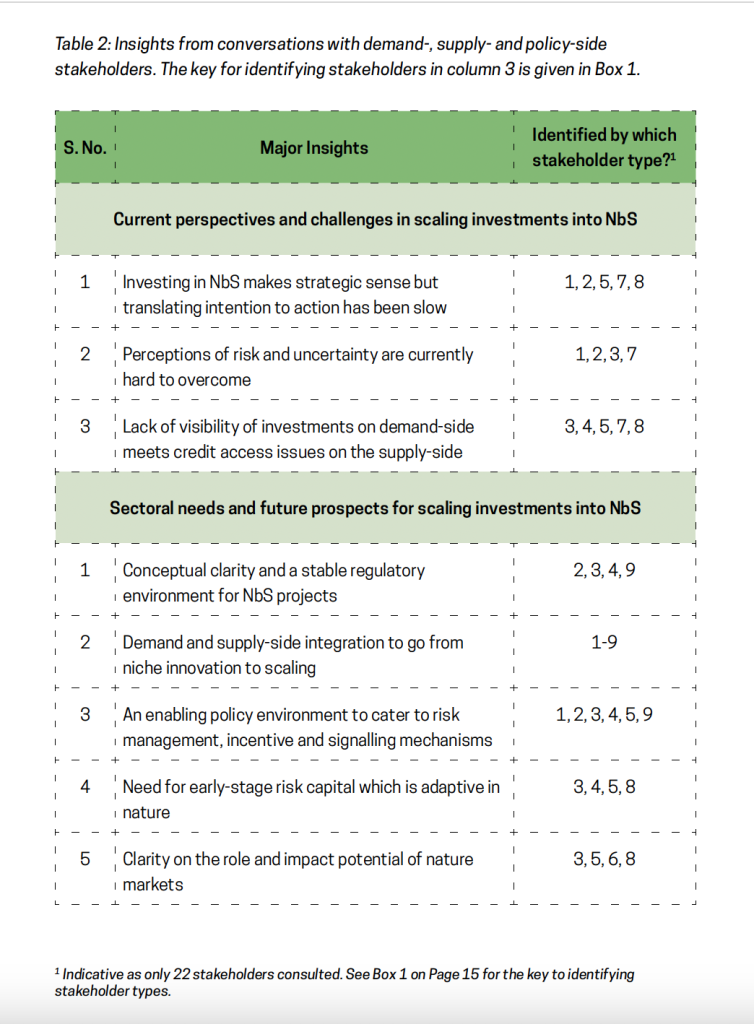
Corresponding to the insights shared above, the responding stakeholders suggested the following shifts in approaches within policy, demand and supply side of investments. Effective cross-sectoral policies, mainstreamed policies on trade, public expenditure frameworks, and secure user rights for farmers were some of the shifts described by the stakeholders.
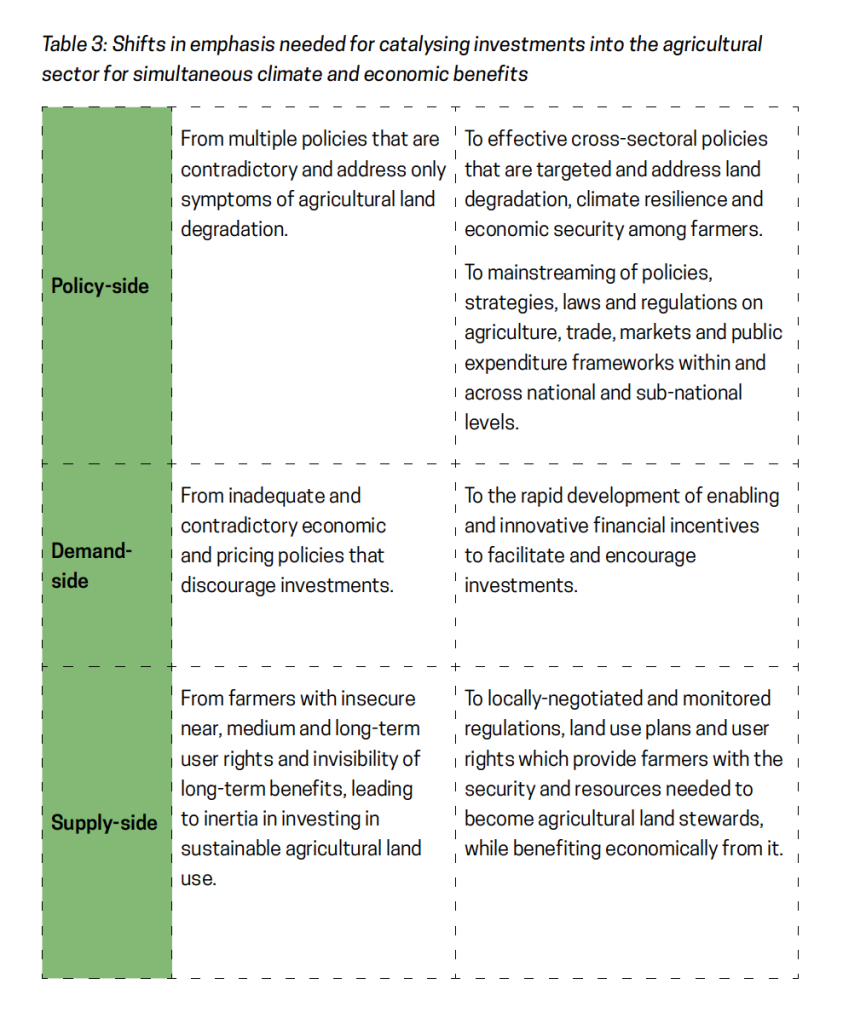
Based on the consultations, the report suggests that sustaining nature-based solutions across various landscapes over time requires a mix of capital instruments. While the government can provide the first push needed in this direction, other finance-related stakeholders can also provide various types of capital support for short, medium or long terms for specific interventions. The types of funders include governments, NGOs, impact funds, development finance institutions, and conventional investors. The chart below unpacks the proposed investment strategy for scaling nature-based solutions in India on a broad level.
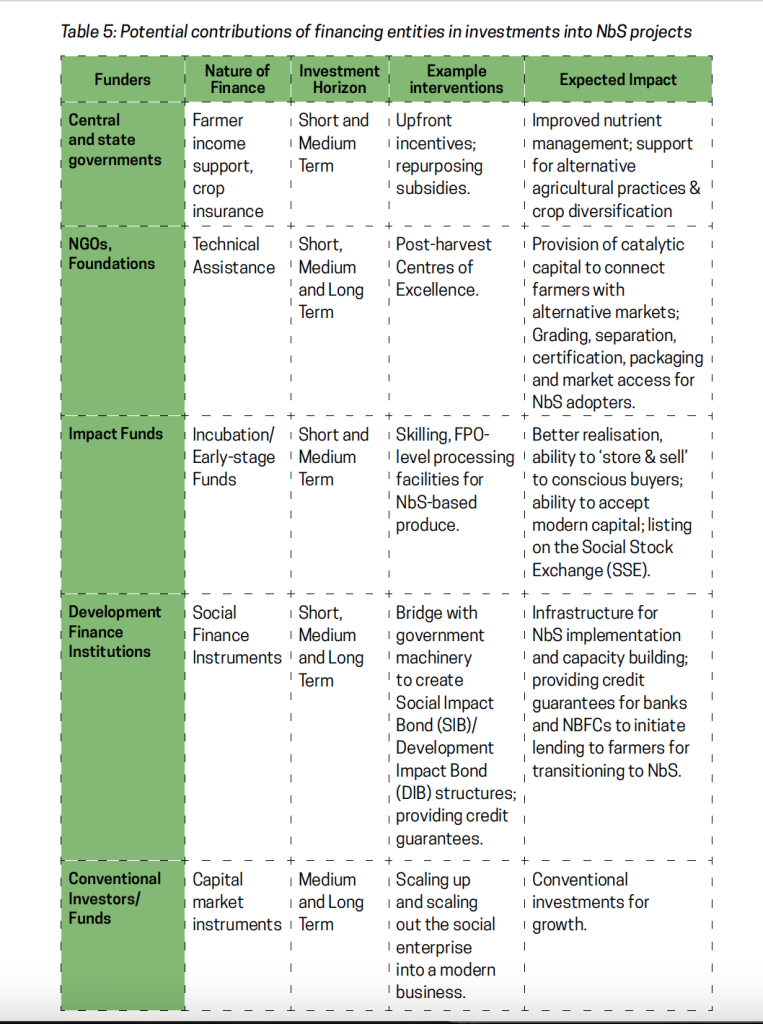
It is important that the investment strategy for NbS is adapted as per the natural endowments as well as the socio-economic and political contexts of a region in which it is meant to operate. A key focus of this will need to be the interests of the smallholder farmers who are most vulnerable to climate risks. Relevant data on finance flows meant for these smallholder farmers, is presently lacking. That, along with stakeholder consultations and incentives to channelise private sector investments towards them will form an effective way of ensuring an inclusive approach while promoting NbS in India.
Excerpts drawn from the report ‘Scoping Investment Potential for Nature-based Solutions in the Indian Agriculture Sector’. Read the full report.
Know more about efforts in India towards supporting whole food systems transition.
Share the article:
